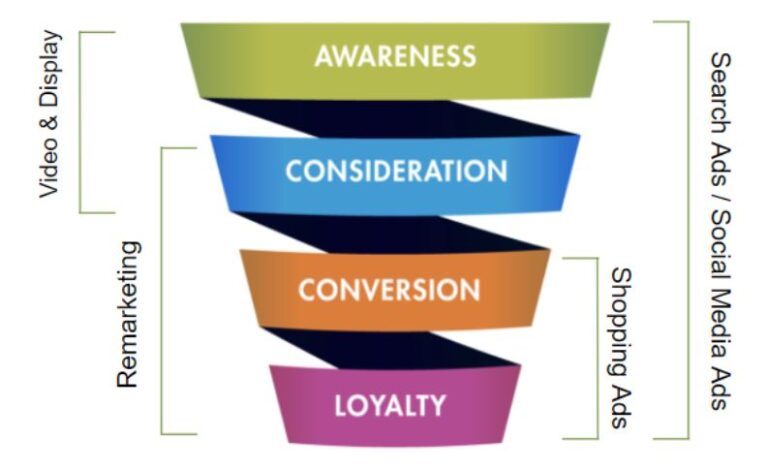Homes have been forced to flex a new workout routine of their own as residents spend more time indoors.
According to Home Advisor’s “State of Home Spending 2020” report, 70% of homeowners say that COVID-19 necessitated more home cooking, a 50% increase in need for work-from-home capabilities, and a 40% increase in home entertaining.
Idle homeowners also have more time to notice problems and explore solutions — all of this to say, the pandemic has altered consumer trends for furniture and home goods. But how exactly?
More people are shopping online, and this trend shows no sign of stopping. Common Thread Collective reported that worldwide online revenue for furniture and appliances is currently $362.9 billion. In the U.S. alone, ecommerce’s share of furniture and homeware is projected to jump to 23% by 2023 (from 20% in 2020).
Apart from that, furniture and home goods brands need to be aware of other significant changes in consumer behavior. This article will feature some of these behavior changes and how brands can adapt their strategies to capture more buyers.
1. Millennials and Gen Zers Are New Home Furnishings Consumers
Home Advisor’s “State of Home Spending 2020” report found that millennials aren’t only becoming homeowners at a rapid rate, but they’re also spending more on home improvement than any other generation when they do.
Last year, millennial households spent or planned on spending nearly an average of $10,000 on home improvement projects.
Gen Zers also currently lead buying power in the home furnishings industry.
“This generation sees potential in every single room and will spend an entire weekend transforming their spaces with hacks from TikTok, cute products from Etsy, and seriously cool finds from the thrift store. They’ve not only defined and refined 2021 home decor trends but have let them take over every inch of their bedrooms, bathrooms, and backyards,” writes Marisa Casciano on Elite Daily.
An important note is that young cohorts don’t want high-end furniture and long-term investments because they’re constantly moving, says renowned lighting and interior designer Tom Dixon on Business Insider. “They want more vintage pieces, more natural materials; they are buying a lot of cheap furniture … ,” Tom added.
What Your Brand Should Do
Evaluate Your Customer Base
Evaluating your customer base can help you see what percentage of millennials and Gen Zers you’re serving. Then, use data to discover their shopping behaviors and expectations. The goal is to understand what they want so you can adapt your strategies accordingly.
Rethink Your Product and Marketing Strategy
Bigger isn’t always better. Smaller, less expensive, and multifunctional items are likely more appealing to young consumers. You may also want to try product bundling, gifts with purchase, or discounts to attract more shoppers.
Keep Up on Social Media
Social media platforms, especially TikTok, help you determine what millennials and Gen Zers are looking for and keep up with consumer trends. Regularly posting on these sites and running paid ads can help bring your brand closer to those buyers.
2. Consumers Prefer Products That Fit Their Lifestyle’s Needs
Today, products that enhance the at-home lifestyle are hot sellers across ecommerce.
According to Shopify’s trending products report, consumers are looking for rugs, kitchen and dining room furniture, blankets, and other home décor items to renovate their spaces to accommodate their new way of living.
Home Advisor’s “State of Home Spending 2020” report showed that finding products to best-suit lifestyle needs is one of the biggest shifts among home service spending. For context, approximately 41% of homeowners say that “making their home better suited for lifestyle needs” was the top reason they completed home improvement projects.
What Your Brand Should Do
Add Enhanced Content and Interactive Elements
Adding enhanced content and other interactive elements to product detail pages (PDPs) like 3D configurators and augmented reality (AR) showcase a product from all angles. This approach will help improve the shopping experience and allow consumers to determine if the product is right for their home.
Improve Digital Search Experience
Help shoppers quickly find what they’re looking for by Improving your digital search experience. Optimize the search bar with autocomplete, autocorrect, suggested terms, or show search results with images. Another idea is to display a product finder or a lifestyle quiz on your online store that asks visitors a few questions about their needs. Based on these answers, you can offer relevant product recommendations.
Offer Made-to-Order Products
By offering made-to-order products, you help consumers get the items with the exact design they want to build their dream home or outfit their dream space. Other benefits include reduced cart abandonment, a simplified purchasing process, and shorter lead times.
3. Consumers Seek Reviews and Recommendations When Shopping
MentionMe’s “Referral Success for Home and Garden Brands 2021” report revealed that common consumer behavior is to seek recommendations and inspiration from others when making buying decisions.
About 59% of surveyed consumers are highly likely to recommend home and garden brands to their friends. In the first lockdown of 2020, referrals in the sector peaked at more than 321% year over year (YOY).
ComScore’s survey shows that consumers also rely on reviews when choosing furniture products to buy.
According to the survey, of the 108 million consumers who purchased a home goods product online from March through August 2020, one in every five customers who purchased home goods online purchased those products after watching video reviews. Two of every three consumers who purchased home goods online also advised friends and family on what products to buy.
What Your Brand Should Do
Enhance Your Social Media Presence
Don’t just exist on platforms like Instagram — stand out. Post content regularly, run paid ads, partner with influencers, and try all the tactics to find the ones that bring the best results. Be sure to include hashtags (e.g., #interiorinspiration and #homedesignideas) while posting to increase the likelihood that consumers find your products.
Implement a Referral Marketing Campaign
According to MentionMe, referral customers spend 25% more, have two times the lifetime value of other customers, and are three times more likely to refer others. You can offer incentives like discounts, complimentary gifts, bonus loyalty points, and gift cards to encourage referees.
Wield User-Generated Content
Like referrals, user-generated content can have a huge impact on buying decisions. Display reviews, testimonials, and other user-generated content on product detail pages, email marketing, and social ads to influence the research and buying process.
Take Action (If Only From the Couch)
In consideration of these consumer trends, the furniture and home goods industry offers promising opportunities. However, only brands that understand what consumers want and fulfill those expectations will win.
If you’re looking for ways to reach more consumers, drive more sales, and thrive in 2021 and beyond, adjust your product and marketing strategies according to the three consumer trends above. By doing that, you’ll meet consumers where they are (at home, probably) and make better business decisions overall.
Download our “Ultimate Ecommerce Holiday Toolkit” to build a plan and ensure your brand wins winter on the digital shelf — no matter how brutal.




